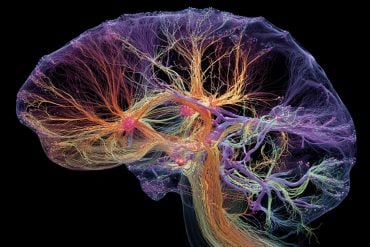Summary: Both food timing and the integrity of the internal clock in the liver altered rhythms of metabolism in mice. Almost half of the rhythmic genes are regulated by both the internal clock and when food is ingested.
Source: University of Pennsylvania
Nearly every cell in the body has its own 24-hour clock, and new research from the Perelman School of Medicine at the University of Pennsylvania shows the way those clocks interact with each other plays a critical role in the health of a person’s metabolism. It’s widely reported that shift workers suffer from high rates of obesity and diabetes when their internal clocks do not coordinate with each other, as well as due to irregular eating times. However, little is known about the interaction between internal clocks and eating schedules, and specifically, the impact on overall health.
Now, in a new study published today in Science, a team of researchers led by Mitchell Lazar, MD, PhD, the Willard and Rhoda Ware Professor in Diabetes and Metabolic Diseases and director of Penn’s Institute for Diabetes, Obesity, and Metabolism, sheds new light on the question.
“The internal clocks in the brain synchronize clocks in peripheral tissues, and misalignment of this system is associated with metabolic dysfunction,” said Lazar, the senior author of the study. “But how the environment and genetic factors control the clocks in peripheral tissue and whether communication exists between clocks in different cell types are largely unknown.”
Lazar’s team, led by postdoctoral fellow Dongyin Guan, PhD, established a new mouse model that can specifically disrupt the internal clock in hepatocytes, the major cell type in the liver, which is the body’s metabolic hub. As a result of this disruption, researchers observed an accumulation of triglycerides in the blood that increase the risk of heart disease, diabetes, and stroke. These results indicate the importance of the internal clocks in peripheral tissue of the liver in maintaining metabolic homeostasis.
Surprisingly, the metabolism of other cell types in the liver were also reprogrammed when the internal clock of hepatocytes was disrupted.
“Our discovery of clock communication between different cell types is very exciting as it suggests a previously unappreciated way that the body’s rhythms are coordinated,” said Guan.
Although day/night cycles influence behavioral rhythms, such as sleeping, emerging evidence suggests that food consumption is an important factor in synchronizing peripheral clocks. Recent research showed time-restricted eating can benefit metabolism, and many dieters try intermittent fasting to lose weight. The Lazar team observed that both food timing and the integrity of the internal clock in the liver altered rhythms of metabolism. Specifically, they showed that nearly half of rhythmic genes are regulated by both the internal clock and when the mice ate their food.

Lazar is hopeful that a better understanding of how food affects the body’s internal rhythms could lead to an optimized diet schedule, which could be an important preventive approach for shift workers as well as a potential therapeutic strategy for patients with metabolic disorders such as obesity and diabetes.
Penn co-authors include Ying Xiong, Trang Minh Trinh, Yang Xiao, Wenxiang Hu, Chunjie Jiang, and Pieterjan Dierickx. Joshua D. Rabinowitz and Cholsoon Jang from Princeton University were also involved in the study.
Funding: The study was supported by the National Institutes of Health (R01-DK045586, DK19525, and F32DK116519), the JPB Foundation, American Diabetes Association Training Grant (1-17-PDF-076 and 1-18-PDF-132) and American Heart Association Training Grant (20POST35210738).
About this neuroscience research article
Source:
University of Pennsylvania
Media Contacts:
Abbey Hunton – University of Pennsylvania
Image Source:
The image is in the public domain.
Original Research: The study will appear in Science.






